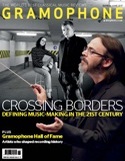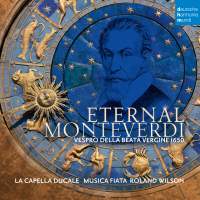Texte paru dans: / Appeared in: |
|
|
Outil de traduction (Très approximatif) |
|
|
Reviewer: David Vickers It is not a new idea to place Monteverdi’s church music from sources later than the famous 1610 collection into the context of a hypothetical Vespers sequence. Leonhardt (Philips, 4/89), Alessandrini (Naïve, A/14), Cavina (Glossa, 5/09) and, just issued, Hollingworth (Decca) all present constructions of ‘other’ Vespers drawing extensively from the composer’s last major publication, Selva morale e spirituale (1641). The ever-intrepid Roland Wilson instead chooses five psalms and a litany from the posthumous Messa a 4 voci et salmi (printed by Alessandro Vicenti in Venice, 1650) alongside solo motets and sonatas by three other musicians who all worked under Monteverdi’s direction at St Mark’s Basilica.
La Capella Ducale move through each shift of gears with expert ease, whether singing subtly nuanced ‘choral’ tutti passages (such as the suspension-laden concluding ‘Amen’ of ‘Dixit Dominus’) or intimate solo ‘concertos’. In the latter category, Monika Mauch’s lightly articulated florid embellishments in Monteverdi’s ‘O quam tu pulchra es’ (printed in Ghirlanda sacra, 1625) are accompanied discreetly by chittarone and harp, Georg Poplutz’s high tenor register has sensitive mellowness in Giovanni Rigatti’s ‘Audi dulcis amica mea’ (a lovely monody over a descending continuo tetrachord), Dominik Wörner’s wide compass and intelligent trillos are spot-on in Rigatti’s ‘Ardet cor meum’ and Constanze Backes converses gracefully with two violins in Alessandro Grandi’s ‘Ave maris stella’. Various duo combinations sing with airy suppleness over a four-note ostinato bass in Monteverdi’s ‘Laetatus sum’, and a trio of two tenors and a bass produce beguiling chromatic supplications in one of his rediscovered settings of ‘Salve regina’ (published posthumously by Vicenti in about 1662). The expert instrumentalists Musica Fiata play at high pitch (A=467), which yields a sunny brilliance in the upper range of sonorities; meantone tuning causes some ear-catching moments whenever solo violin, cornetto and organ continuo are accorded the spotlight in two sonatas by Massimiliano Neri (published 1651). |
|




